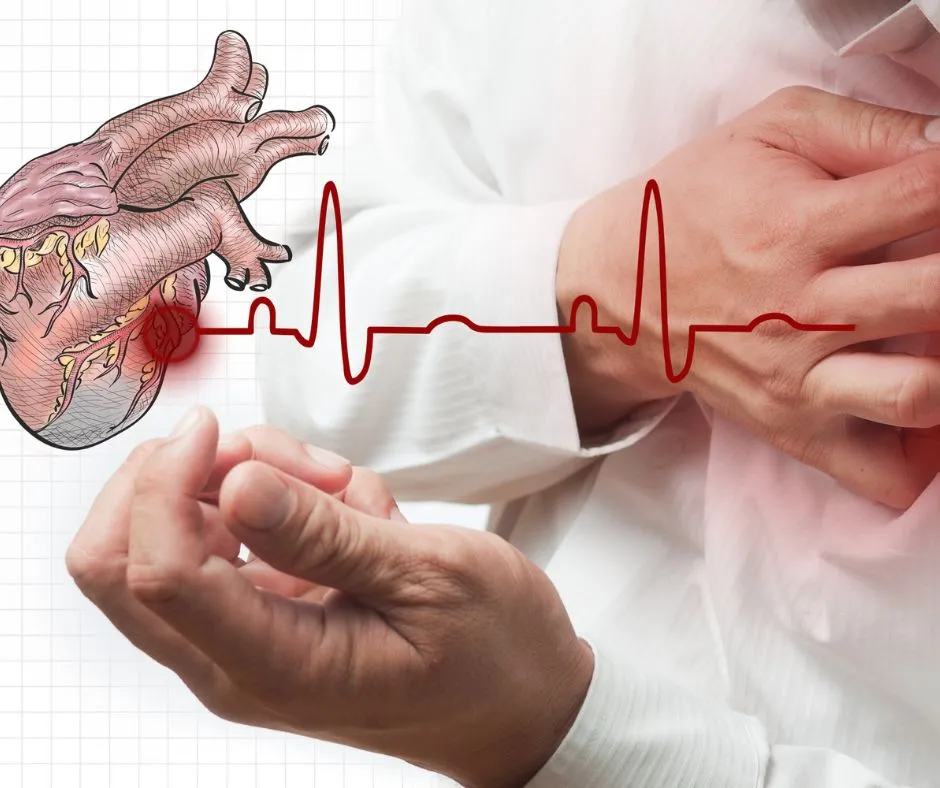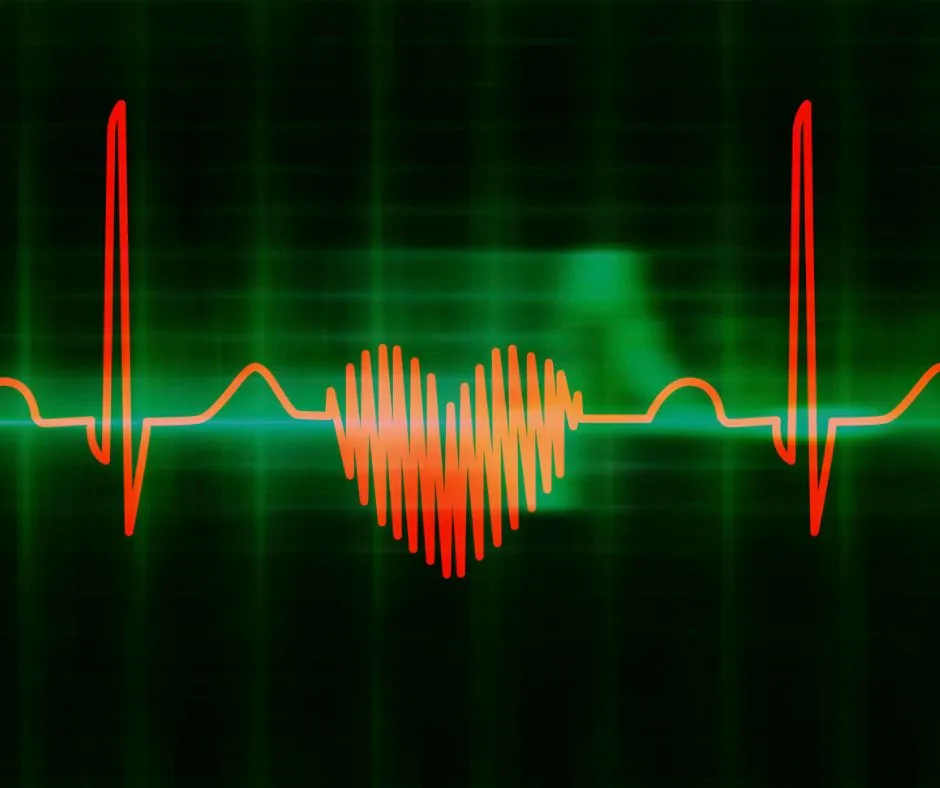Cardiovascular health is a significant concern worldwide, and understanding the differences between angina and heart attacks is crucial for everyone. While both conditions are related to the heart and share similar symptoms, it is vital to distinguish between them for proper diagnosis and treatment. This article delves into the four critical differences between angina and heart attacks, emphasizing their causes, symptom duration, intensity, triggers and relief, risk factors, and long-term impact.
[DIFFERENCE #1: CAUSE]

Angina and heart attacks primarily differ in their causes, which can be linked to problems with blood flow in the coronary arteries that supply the heart muscle with oxygen and nutrients.
Angina, specifically stable angina, is often caused by reduced blood flow to the heart due to narrowed or blocked coronary arteries. A common culprit behind this is atherosclerosis, a process in which fatty deposits or plaques build up on the inner walls of the streets. When physical exertion or emotional stress increases the heart’s demand for oxygen, the partially blocked arteries struggle to supply sufficient blood, leading to chest pain or discomfort, known as angina.
On the other hand, heart attacks occur when blood flow to a part of the heart muscle is completely blocked. This usually results from the rupture of an atherosclerotic plaque, forming a blood clot that obstructs blood flow. Consequently, the affected heart muscle becomes starved of oxygen and nutrients, leading to damage or death of the muscle cells – a condition known as myocardial infarction.
[DIFFERENCE #2: DURATION AND INTENSITY OF SYMPTOMS]
The duration and intensity of symptoms for angina and heart attacks can help differentiate between the two conditions.
Angina generally presents with mild to moderate pain or discomfort in the chest, often described as pressure, heaviness, or tightness. The symptoms typically last a few minutes and subside with rest or nitroglycerin medication. While angina can cause significant discomfort, it usually does not cause permanent damage to the heart muscle.
In contrast, heart attacks are characterized by more severe and persistent chest pain or discomfort. The pain may spread to the arms, shoulders, jaw, neck, or back and may be accompanied by additional symptoms such as shortness of breath, nausea, lightheadedness, cold sweats, or sudden fatigue. Heart attack symptoms usually last more than 30 minutes and do not improve with rest or nitroglycerin. It is crucial to seek immediate medical attention in case of a suspected heart attack, as timely intervention can minimize damage to the heart muscle.
[DIFFERENCE #3: TRIGGERS AND RELIEF]
The triggers and methods of relief for angina and heart attacks can also vary, further helping to distinguish between these two heart-related conditions.
Angina is often triggered by physical exertion, emotional stress, heavy meals, or exposure to cold temperatures, as these factors increase the heart’s demand for oxygen. In most cases, angina symptoms can be relieved by taking a break from the activity, relaxing, or using nitroglycerin medication, which dilates blood vessels and improves blood flow to the heart.
Unlike angina, heart attacks can occur without apparent triggers, even during rest or sleep. Heart attack symptoms do not improve with rest or nitroglycerin, and prompt medical intervention is necessary to restore blood flow to the affected part of the heart muscle.
[DIFFERENCE #4: RISK AND LONG-TERM IMPACT]
Risk factors and potential long-term impacts associated with angina and heart attacks also differ.
Angina, particularly stable angina, is considered a warning sign of underlying coronary artery disease and indicates an increased risk for future heart attacks. Factors that increase the risk of developing angina include smoking, high blood pressure, high cholesterol, diabetes, obesity, sedentary lifestyle, family history of heart disease, and older age. While angina itself does not cause permanent damage to the heart, it highlights the need for lifestyle modifications and medical management to reduce the risk of a heart attack.
On the other hand, heart attacks are medical emergencies with potentially severe complications and long-term effects. Some risk factors for heart attacks overlap with those for angina, such as smoking, high blood pressure, high cholesterol, diabetes, obesity, sedentary lifestyle, family history of heart disease, and older age. However, heart attacks can also occur in individuals without known risk factors.
A heart attack’s long-term impact depends on the damage to the heart muscle and how quickly medical intervention is sought. Complications that may arise after a heart attack include heart failure, irregular heart rhythms (arrhythmias), angina, and emotional issues such as depression and anxiety. It is essential to adhere to a heart-healthy lifestyle, take prescribed medications, and attend regular follow-up appointments with healthcare providers to minimize the risk of another heart attack.
[PREVENTIVE MEASURES]

Incorporating preventive measures into your lifestyle can significantly reduce the risk of developing angina or heart attacks. Consider the following steps for better cardiovascular health:
- Maintain a healthy diet: Focus on a balanced diet rich in fruits, vegetables, whole grains, lean proteins, and healthy fats while limiting saturated and trans fats, cholesterol, sodium, and added sugars.
- Exercise regularly: Aim for at least 150 minutes of moderate-intensity aerobic activity or 75 minutes of vigorous aerobic activity per week, along with muscle-strengthening exercises at least twice a week.
- Quit smoking: Smoking is a significant risk factor for angina and heart attacks. Seek help to quit smoking through counseling, medication, or nicotine replacement therapy.
- Manage stress: Find healthy ways to cope with stress, such as through relaxation techniques, meditation, or seeking support from friends, family, or a professional counselor.
- Monitor and control blood pressure and cholesterol: Regular check-ups and adherence to prescribed medications can help keep blood pressure and cholesterol levels within a healthy range.
- Manage diabetes: If you have diabetes, work with your healthcare provider to manage your blood sugar levels and reduce the risk of cardiovascular complications.
- Maintain a healthy weight: Losing excess weight and maintaining a healthy weight can help lower the risk of angina and heart attacks.
[CONCLUSION]
Recognizing the differences between angina and heart attacks is critical for prompt diagnosis and appropriate treatment. Understanding their causes, symptoms, triggers, and risk factors can help individuals recognize the warning signs and seek medical attention when needed. Adopting a heart-healthy lifestyle, which includes regular exercise, a balanced diet, maintaining a healthy weight, and managing stress, can help reduce the risk of angina and heart attacks. Furthermore, regular check-ups with healthcare professionals can aid in early detection and intervention for better cardiovascular health.
Remember, it is crucial to seek immediate medical attention if you experience symptoms that could indicate angina or a heart attack. Early diagnosis and treatment can be life-saving and help minimize potential long-term complications.
Watch Video

